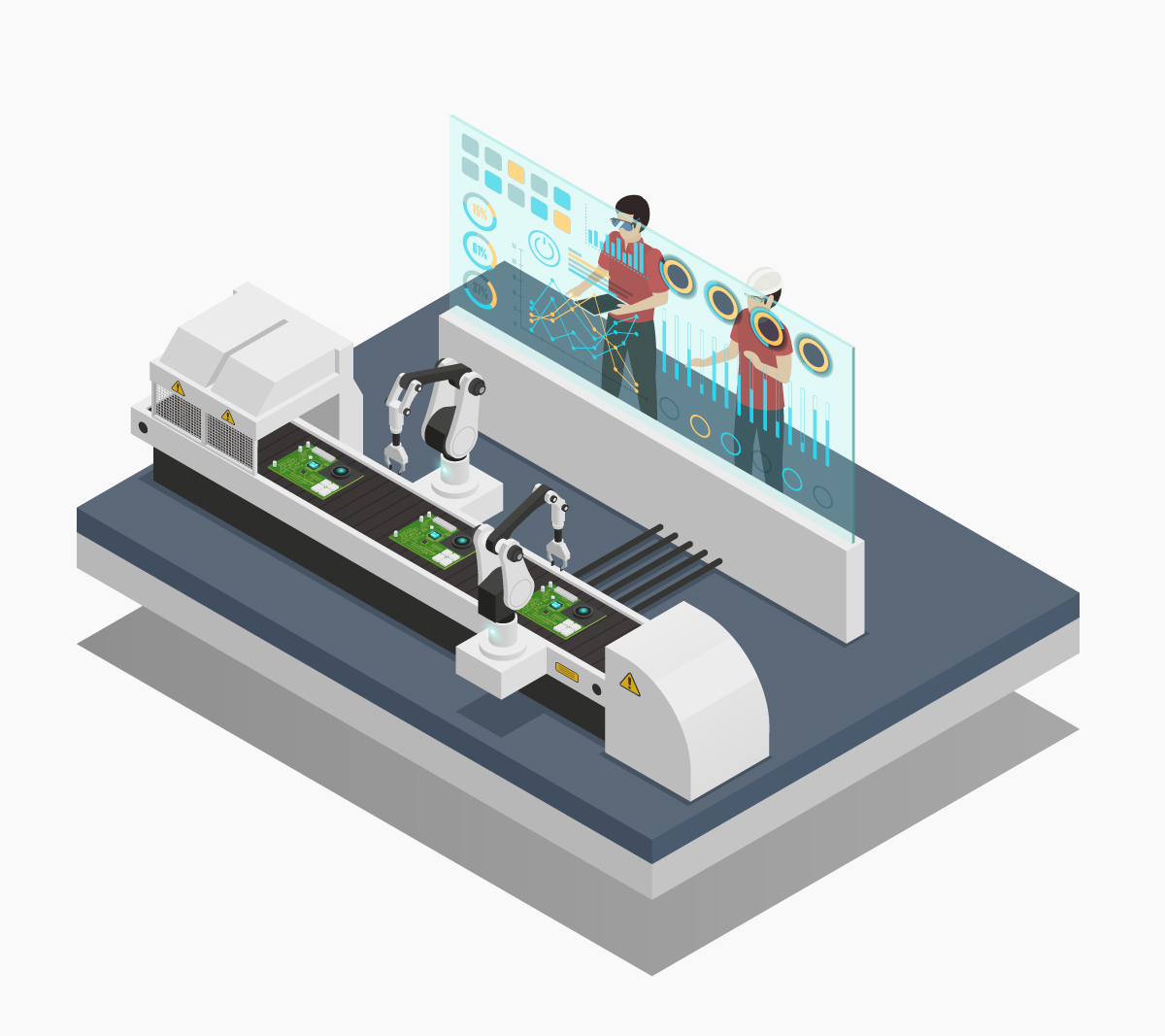Smart glasses can be defined as wearable computing consisting of a glasses frame and an integrated head-mounted display. The Smart Wearable technology depends on the amalgamation of BlueTooth, Wi-Fi networks and independent, and versatile 4G LTE. It draws the similarity from a smartphone with regards to the hardware components like Gyroscope, Microphones and Speakers to enable interoperability between humans and devices.
Benefits of using Smart Glasses at the Workplace?
Reduce Downtime
Smart Glasses can be highly beneficial to companies making heavy machinery. If a machine breaks down, it can be costly as well as time-consuming. Inspecting it in a traditional way can lead to a lot of errors and human involvement. In such a situation, smart glasses can provide real-time sensor data and predictive maintenance. This can reduce machine outages and costs.
Improve Safety
Workers safety is ensured with its hands-free approach which allows users to interact with the device without the need of holding it in hand. For example, a worker working on high voltage cable can access information on a heads-up display rather than taking out a smartphone and getting distracted.
Workforce Collaboration
With its audio and video capabilities, colleagues can connect and communicate with each other to seek solutions to complex problems. For example, instead of a remote expert flying down to the location where the frontline worker is working, he can guide his subordinate to diagnose the problem by working in an office environment. This saves labour cost.
What are the use cases of Smart Glasses at work?
Workflow Management
Training new recruits and existing employees is a pivotal part of any organization around the world. Companies working in the industrial sector can deploy smart glasses to train people. For example, during the initial skill adoption phase, companies can give smart glasses to learners for step-by-step workflow guidance.
Secondly, if an on-field worker encounters a situation while fixing a machine, then he can simply use the smart glass to share his field of vision with his immediate supervisor who can solve the problem.
Transfer of Knowledge
In the field of manufacturing, error-free operations expedite the industrial output. To ensure that the on-field worker has deployed accurate corrective measures, the supervisor can send background information or a checklist that the worker can see in his smart glass and make necessary adjustments.
Quality Control/Documentation
Most of the technicians refer to the paper-based manuals to inspect alterations in a machine. In the case of anomalies, the workers have to document it on a piece of paper and share it with his/her supervisors. This is certainly time-consuming and can cause disruption in the supply chain. To expedite the process, smart glass can not only help in ensuring quality inspection but can also identify and record the faults/errors that might occur.
Picking Process and Packing
The picking process is one of the most important parts in the logistics sector. It plays a pivotal role in a company's supply chain process as timely product picking and packing from the warehouse to satisfy independent customer orders can directly impact a company's success. Smart Glasses can assist Warehouse workers across different order picking methods like Single Picking, Batch Picking, Multi-order picking to locate, scan and move inventory without using bulky scanning machines.


